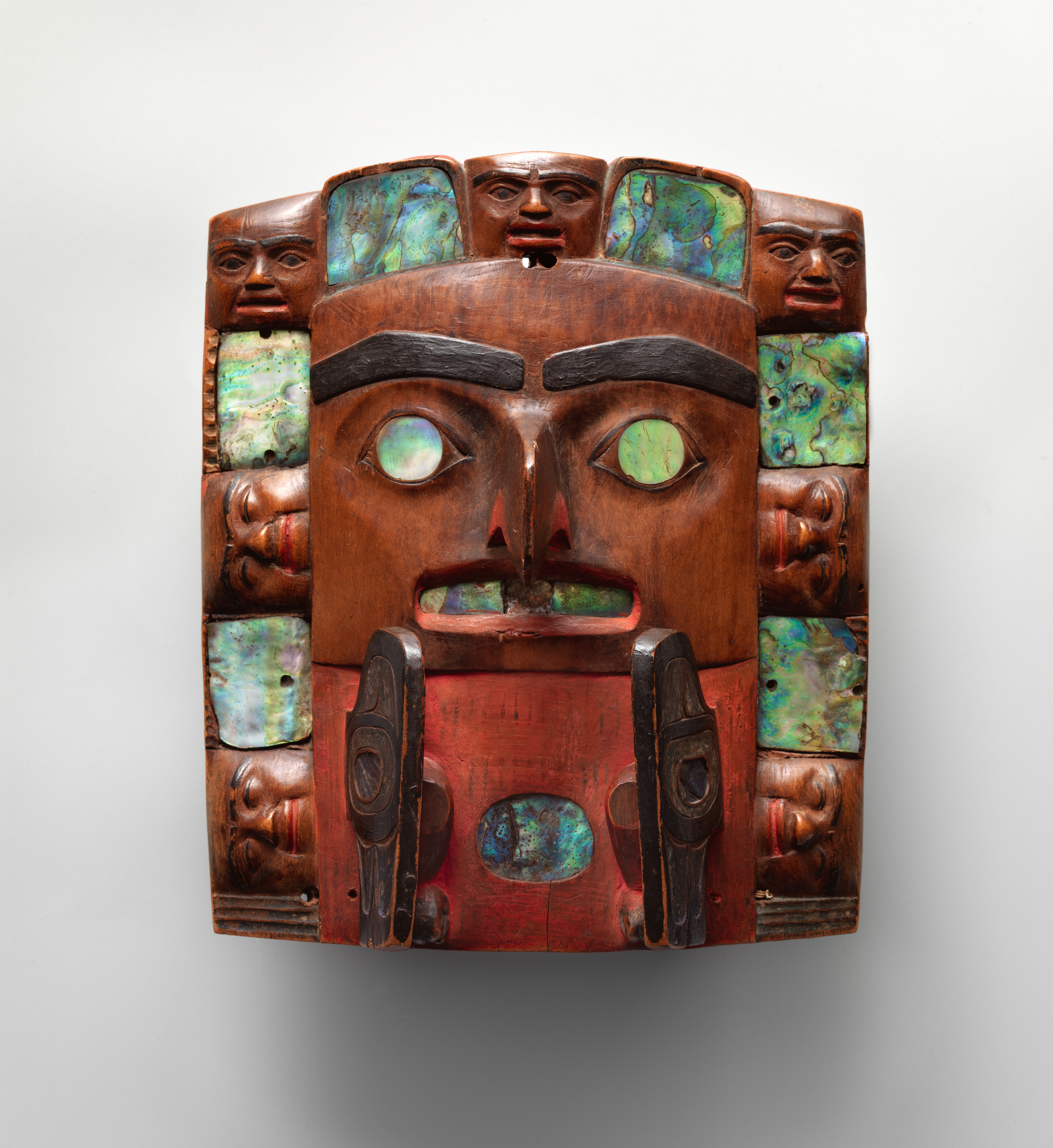Today's artifact was created by the Tsimshian, who are an indigenous people of the Pacific Northwest Coast. Their communities are mostly in coastal British Columbia and far southern Alaska, around Terrace and Prince Rupert in British Columbia, and Alaska's Annette Island.
During certain ceremonies, Tsimshian leaders wear symbols that validate their authority, such as dance blankets woven from cedar bark fibers and mountain sheep wool or rattles carved in the shape of a raven. Among the most important elements of chiefly attire is the headdress. This avian example of a headdress centerpiece, or frontlet, was once adorned with goose down, a train of ermine skins, and a crown of spiky sea mammal whiskers. Its central image depicts a mythological bird-human. The strong beak, projecting wings, and realistic talons showcase the artist’s skill and recall similar three-dimensional imagery on monumental carvings.
P.S. A Tsimshian bent-corner wooden chest was recently exhibited at the Frieze Viewing Room. Read more about this exhibition here.


 Unknown Artist
Unknown Artist